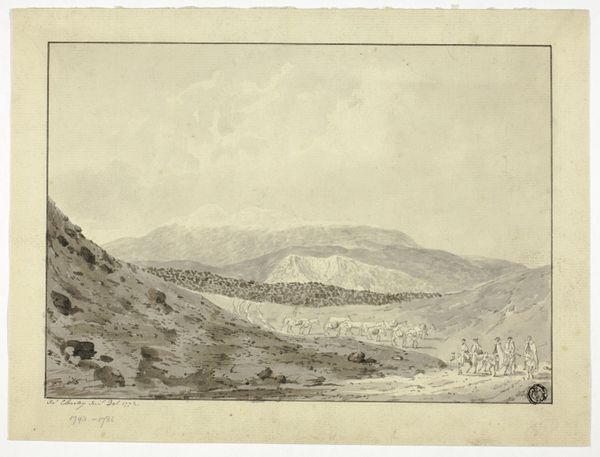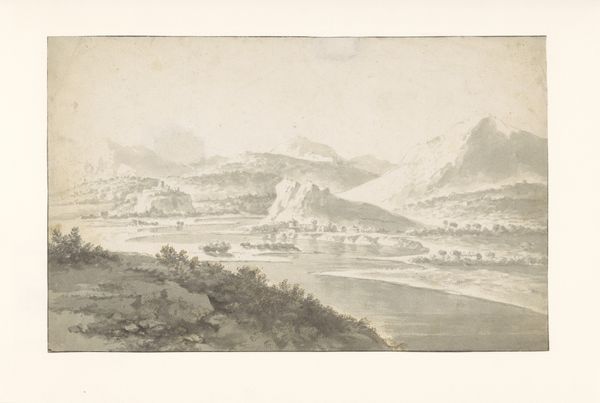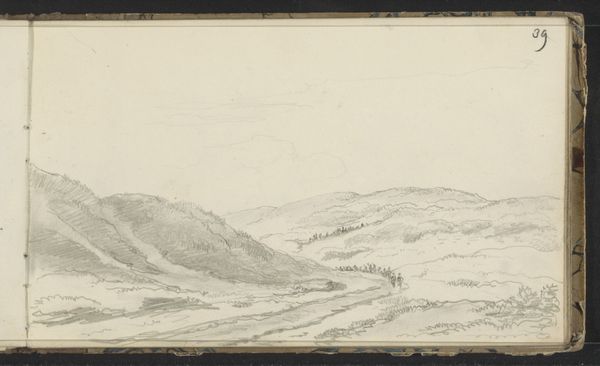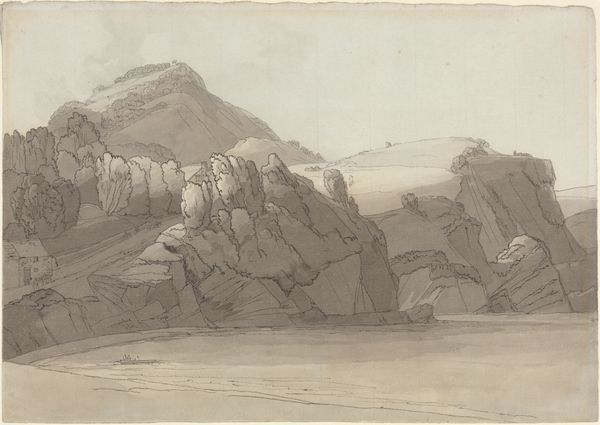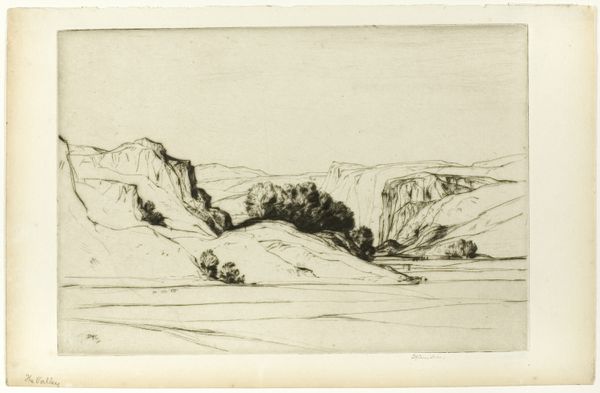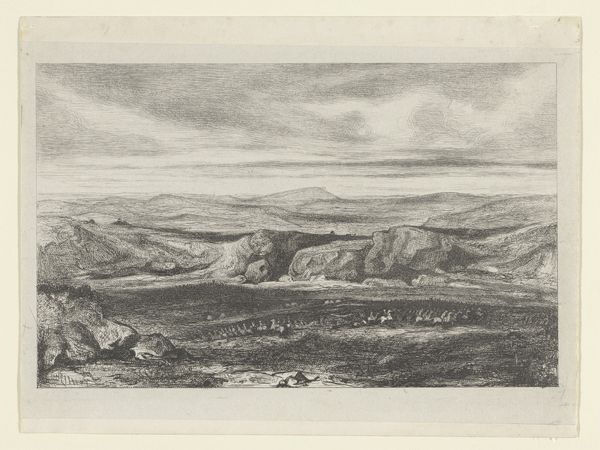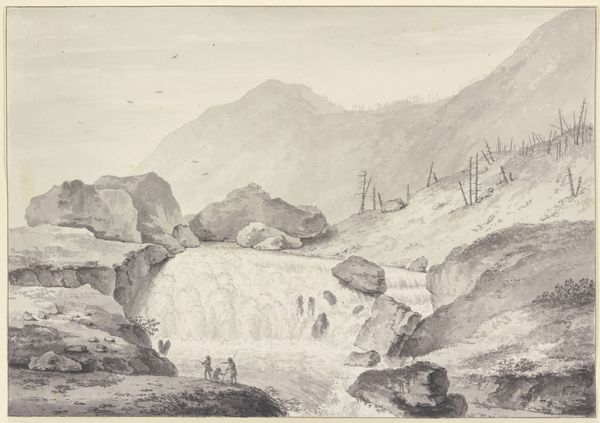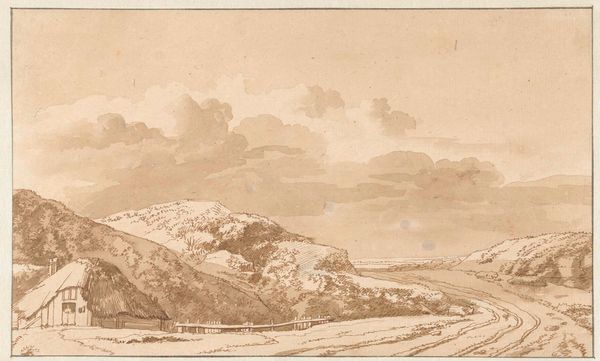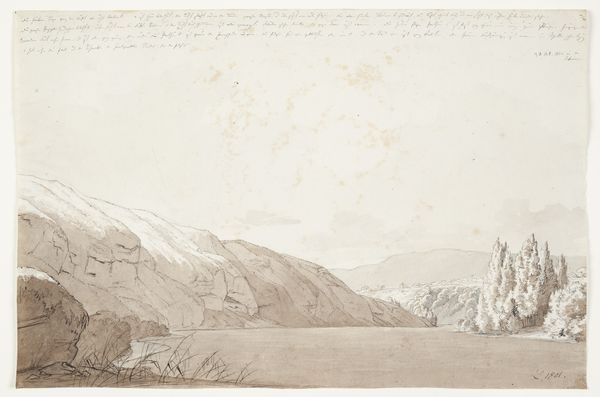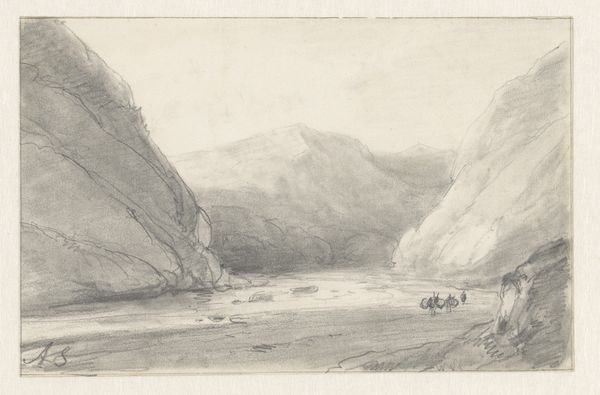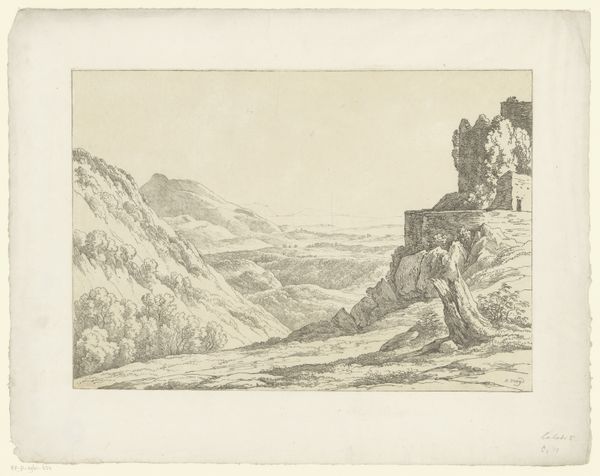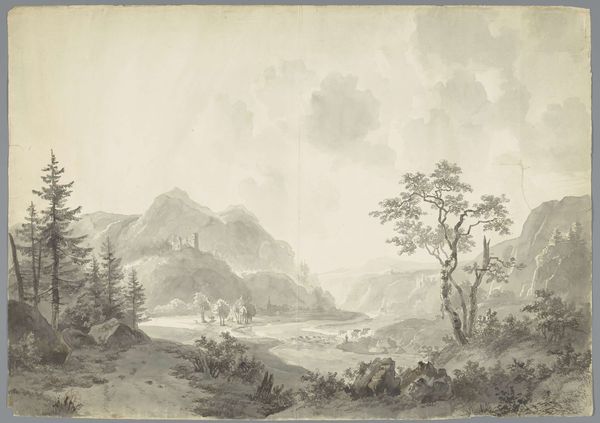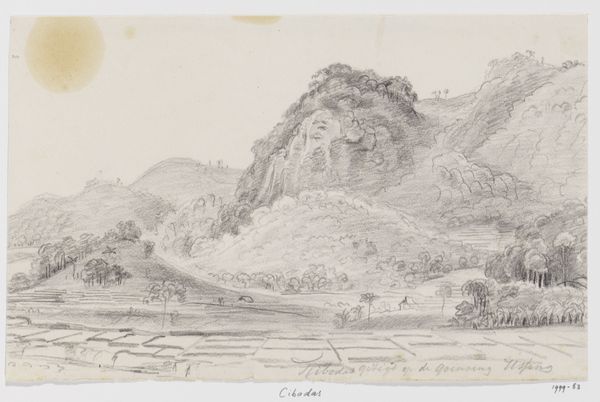
drawing, dry-media, ink, pencil, chalk
#
pencil drawn
#
drawing
#
landscape
#
etching
#
dry-media
#
ink
#
pencil drawing
#
romanticism
#
pencil
#
chalk
#
15_18th-century
Copyright: Public Domain
Curator: My first impression is of quiet solemnity. A grayscale image with looming rocky crags. Editor: Indeed, this is a work titled "View into a Valley near Eisenach," crafted between 1795 and 1799 by Georg Melchior Kraus. It's a pencil, chalk, and ink drawing currently housed here at the Städel Museum. Curator: Kraus perfectly captured that romantic sensibility of finding sublime beauty in nature's grandeur. You can almost feel the cool, damp air of the valley rising. But I’m curious why the composition prioritizes this rugged escarpment, placing us in the lower, seemingly less remarkable foreground. Editor: That's the curious bit isn't it? We know that 18th-century European elites were swept away by Romanticism's obsession with untouched wilderness. For Kraus, the focus may not be about simply depicting a beautiful vista. Curator: But about how this unkempt rock-face holds memory... What can such rock faces mean symbolically to Kraus and his contemporaries, given how close he dates the image to the close of the 1700s? Editor: Remember that artists such as Kraus also made their living within a nexus of royal patronage and Enlightenment thought. Landscape art was gaining increasing recognition within these courtly structures. I believe, this wasn't solely about romantic feeling, it was about showing the landscape to viewers—or owners of Kraus' art—in a new way, perhaps one reflecting new scientific awareness about nature. Curator: I can't quite agree. I feel the sheer scale emphasizes how powerless we are against geological time. The dark strokes create such a striking sense of contrast against the lighter areas, that it does impart on the scene that certain romantic sublime... That we, as mere humans are unable to truly possess these untamable forces of the natural world, which tower above all. It makes this location and time particularly striking, given the artist's chosen symbolism in other areas. Editor: Well, whether artistic showmanship, nature document or Romantic testament to nature's sublimity, it definitely provokes something primal, an awareness of geological temporality. Curator: Yes, it draws me into the quietude, the slow unfolding of time etched into those stone faces. Editor: It certainly prompts you to meditate on our own place in time. And that speaks to Kraus' enduring skill in portraying this region and time in history.
Comments
No comments
Be the first to comment and join the conversation on the ultimate creative platform.
